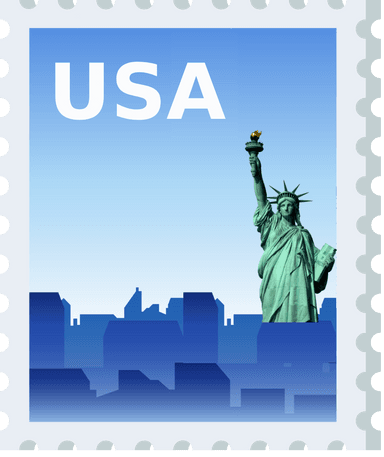AI Empowering UX Designers: Leveraging AI for Better User Experiences

Quick Summary: Artificial intelligence (AI) is one of the biggest technological trends in business, marketing, advertising, and technology, with real-time, interactive design software putting AI front and center for UX designers.
Introduction
Artificial intelligence (AI) is showing promising signs in multiple fields and businesses are already seeing its benefits. One area this technology has a vast potential to deliver exceptional value is in user experience (UX).
As artificial intelligence capabilities continue to evolve, applications that used to be purely theoretical are becoming a reality. Today, designers and developers must navigate the complex and rapidly evolving landscape of AI technology to create engaging user experiences for this new world of intelligent products.
Artificial intelligence is a cognitive technology that enables humans to process large amounts of data in their specific areas of expertise and at the same time provides them with the ability to utilize the additional capabilities of algorithms to make better decisions as well as schedule. Web development offers numerous benefits for clients. These include better scalability, easier maintenance, and quick solutions to potential challenges that emerge during day-to-day operations.
Artificial intelligence (AI) is a powerful tool that can be used to solve complex user experience (UX) design challenges. Wave your magic wand and you can create entirely new products, experiences, and solutions. But before we all jump on the AI bandwagon, let’s take a step back and explore both the opportunities and challenges that the new technology presents.
7 Ways UX Designers Can Use AI To Their Advantage
User Research and Insights: AI can assist UX designers in gathering and analyzing user data on a larger scale. By leveraging AI algorithms, designers can extract valuable insights from user behavior, preferences, and interactions. This enables them to make data-driven design decisions and better understand user needs.
Personalization: AI allows UX designers to create personalized experiences by tailoring content, recommendations, and interfaces to individual users. By utilizing machine learning algorithms, designers can dynamically adjust the user experience based on user preferences, demographics, and past interactions, resulting in more engaging and relevant experiences.
Automated Prototyping and Testing: AI-powered tools can automate the prototyping and testing processes. Designers can use AI to generate interactive prototypes quickly, saving time and effort. Additionally, AI can assist in user testing by automating data collection and analysis, providing valuable insights to refine designs and improve usability.
Natural Language Processing (NLP): NLP enables UX designers to create interfaces that understand and respond to natural language. Integrating AI-powered chatbots or voice assistants with NLP capabilities allows for more intuitive and conversational user interactions, enhancing the overall user experience.
Visual Design Assistance: AI tools can aid UX designers in creating visually appealing designs. They can generate design variations, suggest color palettes, or assist in layout composition, helping designers explore different options and streamline the design process.
Accessibility and Inclusive Design: AI can support UX designers in ensuring accessibility and inclusivity in their designs. AI-powered tools can analyze designs for accessibility issues, provide suggestions for improving accessibility, and assist in creating more inclusive user experiences for individuals with disabilities.
Performance Optimization: AI algorithms can analyze user interactions and patterns to optimize website or app performance. By identifying areas of improvement and automating performance enhancements, UX designers can ensure smooth and efficient user experiences, reducing load times and minimizing errors.
How accurate is AI in UX design?
Despite the increasing popularity of artificial intelligence, it should never be used as a replacement for human judgment. AI helps inform and guide decisions, allowing you to make more informed product decisions that will ultimately improve your user experience.
When creating a new AI-based application, it’s important to understand how you’re going to collect and verify the data. There are a number of ways that you can do this, and some tools will be more suited to your needs than others.
When it comes to analyzing user data, it’s a good idea to complement AI-driven analytical insights with your own qualitative research. Before you can trust the results of your quantitative data, make sure you’ve analyzed it in conjunction with qualitative data analysis—like user interviews, focus groups, and card sorting.
Which AI tools are best for UX design?
There are several AI tools available that can be beneficial for UX designers. Here are some popular ones:
- Figma
- Adobe Sensei
- UXPin
- Sketch2React
- Contentful
- ProtoPie
- OpenAI GPT-3
- Khroma
- Jasper
- Fronty
Conclusion
AI tools are of increasing importance for UX Designers. With AI, designers can give the user a better experience and focus on issues that they would otherwise overlook. Unfortunately, many UX Designers misunderstand AI or don’t know how to properly implement it into their design process. There is a lot of advertising surrounding cognitive AI. That’s why we’ve looked at 6 top brands using AI in UX design and reviewed what tools they use and examples of their work to help you get started.
We have a team of creative UI/UX designers who always challenge AI with their creativity and understanding of the requirements that today’s users rely on. We build digital products that create exceptional user experiences that make users come back often to accomplish their work. Do you have any digital product ideas? If yes, then you’re in the right place. Our digital experts would love to learn about it and create a flawless plan for your product’s success.

Have an idea?
Get in touch, we’d be
happy to hear from you
We are always looking out for new collaborations, whether you are a client who is passionate about a project or a talent who is interested in joining our team, our doors are always open.
locate us

India (HQ)
618, Shekhar Central, Palasia Square, A.B Road, Indore, Madhya Pradesh, 452001
+918109561401

United Kingdom
Brain Inventory, SBVS, 8 Roundhay Road, Leeds, UK, LS7 1AB
+18008209286

Canada
44 Main Street East Milton, ONCanada L9T 1N3
+4166696505

Jordan
185 Wasfi Al-Tal Street, Ammon Oasis Complex P.O Box 4724 Amman 11953 Jordan
+960770781000

USA
720 Seneca St Ste 107 Seattle, USA 98101
+1(206)6533419
if it's digital,we'll make it.
- Numetric - Online Accounting Software similar to QuickBooks
- Bloomia - Kegel exercise
- Virifi - Blockchain Powered Document Certification & Signing Platform
- Revolution Travel CRM - Custom CRM Built for Travel Agents
- Fatoura - Online Invoicing Platform
- My Fit Mantra - Your health partner
- Ocureel - Relation Building and video sharing Application